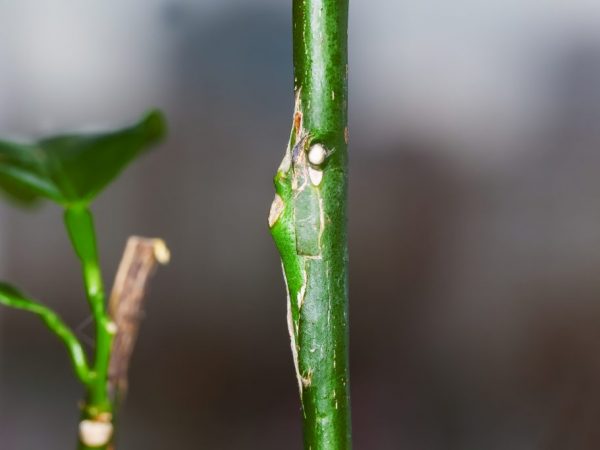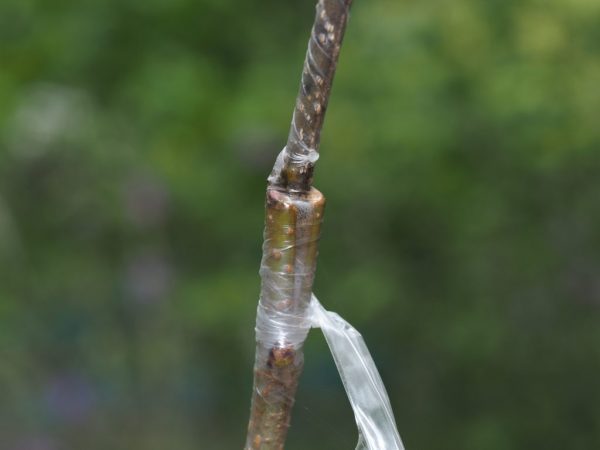Lemon grafting methods at home
With proper care, it is easy to grow a full-fledged tree from lemon seeds. But it will be decorative and will start bearing fruit in 7-9 years. In order not to wait so long, carry out the procedure of grafting a fruitful variety on an ornamental tree. Vaccination of lemon at home is carried out in several ways.

Lemon grafting methods at home
Why vaccinate for citrus
Planting a lemon tree at home is a dream come true. But it will not be a decorative, but a fruitful tree to give tasty fruits. A seed-grown lemon will bear fruit as small and too acidic lemons.
The grafted lemon tree will begin to bear fruit with delicious lemons in 2-3 years after the procedure. A thorough preparation is carried out in front of her. If the lemon is inoculated incorrectly, both the rootstock and the scion will die.
Understanding the necessary terms
The rootstock is a tree that was grown independently from a lemon seed. It doesn't bear fruit. Sometimes it grows to a large size, so it needs to be cut. A thick stem (5-6 cm) is ideal for the procedure. If you use dwarf varieties, there will be less need to prune the crown.
The graft is a fruiting varietal lemon. To do this, choose varieties that are able to survive at home. The twig is cut from an adult fruiting tree.
The right set of tools
To plant a lemon at home, prepare the following tools:
- sharp knife;
- tape (it is used to fix the scion; it is better to take a special one);
- garden pitch;
- film;
- damp cloth.
For 3 ways, the tools will change. They should be rhodesinfected with alcohol, wash your hands thoroughly and isolate the plant from pets and other indoor crops: they can be a source of disease.
When to carry out the procedure
Citrus grafting is recommended between April and August. At this time, the active movement of juices begins, the scion will take root better. A cloudy day is good when the air humidity is high. In this case, citrus should be grafted only at an air temperature of at least 17 ° C.
Methods of conducting
It is possible to plant a lemon at home in 3 main ways: grafting a lemon cuttings into the split under the bark, budding method, copulation method. Mostly they differ in the places of the cuts and in how the scion is located on the rootstock.
Method one: stalk

The stump must be wrapped tightly with tape
To plant a lemon at home, take a stalk with a bud from a fruiting plant. Treat the cut site and graft with a damp cloth. Then the following actions are carried out:
- cut wild (non-fruiting) lemon at a height of 5-10 cm from the ground;
- a vertical incision is made, forming a split to a depth of 2-3 cm;
- shallow cuts 2.5-3 cm long are made on the scion;
- insert the scion into the split;
- tightly wrapped with tape, the stump is treated with garden var.
The method is full split and half split.Semi-cleavage affects only one side of the rootstock.
Method two: budding
The budding method allows grafting on a plant from 6 mm in diameter. It is done like this:
- A T-cut is made on the side of the tree trunk: horizontally - 1 cm, vertically - 2.5 cm. It is important not to touch the core of the tree.
- The bark is carefully folded back.
- A branch with an eye is cut off from a fruitful citrus. It is inserted into the incision so that it fits completely under the bark.
- The incision is wrapped with tape, but the kidney is left open.
Be sure to take a stalk with a bud. In this method, 2 kidneys can be inoculated at the same time. When it takes root, the stock is cut 5-6 mm above the site of the procedure, and new branches on the stems are regularly cut off, which use all the juices of the plant.
Third way: copulation
For this method, a scion and rootstock of a similar diameter are prepared. Copulation is as follows:
- the scion and rootstock are pruned, peeling off the bark, 3-4 cm in length;
- make cuts across to a depth of no more than 1 cm;
- insert into each other so that they fit tightly into each other; a recess is made on the rootstock, and a branch is fixed with a notch on the scion;
- the junction is wrapped with tape, as tight as possible; if there is no garden tape, use an elastic material (medical glove, elastic bands).
In this way, up to two new branches are engrafted simultaneously. At the end of the procedure of slicing and their processing, the procedure does not end. Now the indoor tree requires special care and increased attention.
Plant care
The grafted lemon tree at home is placed under sterile conditions. To do this, prepare a mini-greenhouse:
- A tree with a pot is placed under a film or bag. A large glass jar will do as well.
- A container of water is also placed there to maintain humidity.
- Open the structure twice a day for 2-3 minutes. Gradually increase the air supply up to 5 min. by the end of engraftment.
The tree should be kept in this mode until the moment when it becomes clear whether the procedure was successful. All leaves are removed from the scion: if after 15 days the petioles are easily separated, the procedure was successful. If the cuttings turned black, the scion did not take root.
An unsuccessful procedure has many reasons: infection, weak plants, violation of technology. To increase the chances of success, several rootstocks are prepared and the procedure is carried out in different ways. It is also permissible to use a special pruner that makes even sharp cuts.
If successful, after 15 days, the bandage is loosened, then removed. The terms of full growth are from 3 weeks. Caring for the established scion:
- untie the tape (glove, elastic bands);
- a young branch is fixed vertically (tied to a stock or a vertical stick);
- water the plant regularly, maintain humidity and temperature;
- the stock is cut off at a height of 10 cm from the vaccination site (if budding was used).
Taking care of the tree is now allowed in the previous mode. For a lemon to bear fruit, they wait from 2 to 4 years. Some varieties bloom the next year after grafting on the stock.
Conclusion
There are several ways to plant lemon at home. They all require surgical precision and sterility. The scion will not take root without special care after the procedure.
It is necessary to plant a houseplant at the correct time of the year with suitable tools. This citrus will bear fruit in 2 years.


